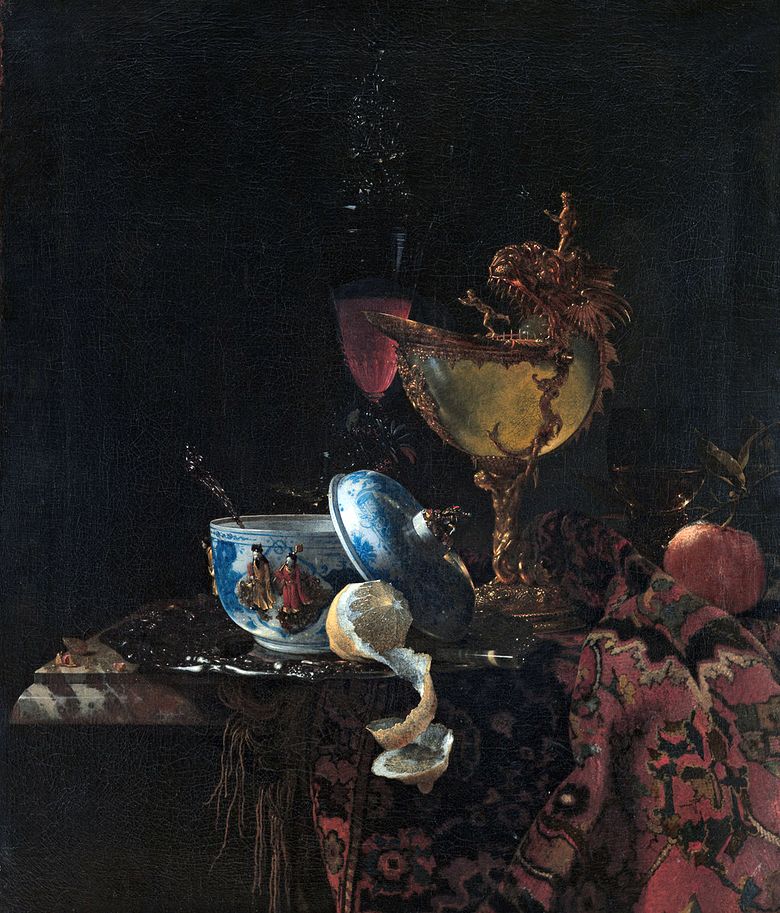
Willem Calf is one of the masters of the Dutch still life of the 17th century. He was a highly educated person, according to the testimony of contemporaries, was engaged in the examination and sale of artistic values. His knowledge and fine taste gave his still-lives painted a special refinement and aristocracy, which distinguished his work from the works of other masters.
Calf worked in France, was in Italy, and from 1653 he stayed permanently in Amsterdam. In a number of works the artist presents poor kitchen interiors, backyards of peasant houses. For these works, the sketch style of the letter is typical. Directly opposite in a picturesque manner, one can name luxurious yet still lifelike “desserts”, in which harmony in the selection of objects was combined with their sophistication, and the letter distinguished virtuosity in the transfer of volumes, shapes and textures of materials.
Under the influence of Rembrandt’s creativity, Kalf preferred deep golden-red tints, a dark background, in which the objects he depicted performed especially effectively in soft warmth. Other famous works: “Desert”. The Hermitage, St. Petersburg; “Still-life with Chinese porcelain”. State museums, Berlin; “The yard of the peasant house.” The Hermitage, St. Petersburg.
 Still life with a drinking horn by lobster and glasses – Willem Kalf
Still life with a drinking horn by lobster and glasses – Willem Kalf Still life with a golden cup by Willem Klas Kheda
Still life with a golden cup by Willem Klas Kheda Still life with a tin mug by Willem Klas Kheda
Still life with a tin mug by Willem Klas Kheda Dessert by Willem Kalf
Dessert by Willem Kalf Bodegón con una taza de concha de perla – Willem Calf
Bodegón con una taza de concha de perla – Willem Calf Nature morte avec la tasse de coquille de perle – Willem Calf
Nature morte avec la tasse de coquille de perle – Willem Calf Still Life by Christopher Paudiss
Still Life by Christopher Paudiss Dance around the golden calf by Nicola Poussin
Dance around the golden calf by Nicola Poussin